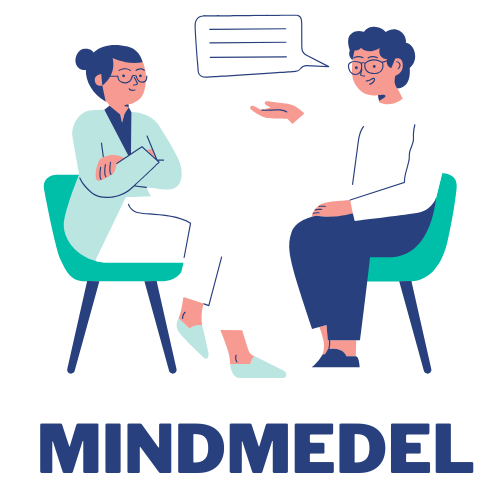The Ultimate Guide to Smarter Health Choice: Psychology and Practicality Combined
The Intersection of Psychology and Practical Health Choices
Have you ever paused to ask yourself why you make the health choices you do? Is it a conscious decision driven by logic, or are deeper psychological and emotional factors at play? Understanding the “why” behind your decisions is just as important as the “how.” This comprehensive guide blends insights into the psychology of health choices with practical, actionable advice to help you unlock a healthier, more fulfilling life.
Key Takeaways:
- Psychological frameworks like the Health Belief Model (HBM) and Self-Determination Theory (SDT) reveal why we make certain choices.
- Small, consistent health choices compound into significant long-term benefits.
- Social influences and intrinsic motivation are pivotal for lasting change.
- Scientific research can guide your decisions and separate fact from fiction.
- By combining psychology with practical strategies, you can unlock a healthier, more fulfilling life.
The Foundations of Health Choices
The Ripple Effect of Everyday Decisions
Every choice you make ripples across your health and well-being. From the food you eat to the exercise routines you follow, each decision affects your physical and mental state. For example, choosing a balanced breakfast improves focus and energy, while skipping meals often leads to fatigue and poor decision-making later in the day.
According to a Harvard study, adopting healthy habits can extend your life expectancy by over a decade. This highlights how small, daily actions lead to substantial long-term benefits.
Psychological Models That Shape Health Choices
- Health Belief Model (HBM): The Role of Beliefs and Perceived Barriers
The Health Belief Model (HBM) explains how personal beliefs influence health behaviors.
Key Components:
- Perceived Susceptibility: How vulnerable you feel to a health risk.
- Perceived Severity: How serious you believe the consequences of inaction are.
- Perceived Benefits: The value you see in taking preventive measures.
- Perceived Barriers: The obstacles you face in adopting new behaviors.
- Cues to Action: Triggers that prompt action, such as advice from a doctor.
- Self-Efficacy: Confidence in your ability to make changes.
Example: Deciding to get a flu shot depends on how severe you perceive the flu to be, the vaccine’s benefits, and your ability to overcome fears like needles.
- Theory of Planned Behavior (TPB): Intentions Drive Actions
The Theory of Planned Behavior (TPB) emphasizes that intentions are the strongest predictors of behavior.
Key Influencers:
- Attitudes: Positive or negative feelings about a behavior.
- Subjective Norms: Perceptions of what others think you should do.
- Perceived Behavioral Control: Belief in your ability to perform the behavior.
Example: If you believe exercise is enjoyable, your peers encourage it, and you feel confident managing your time, you’re more likely to stick to a fitness routine.
- Social Cognitive Theory (SCT): Learning Through Observation
Albert Bandura’s Social Cognitive Theory highlights how behavior is shaped by observing others and their outcomes.
Key Principles:
- Observational Learning: Watching others succeed or fail.
- Reinforcements: Rewards or punishments that follow actions.
- Self-Efficacy: Confidence in your ability to achieve similar results.
Example: Watching a friend successfully quit smoking can inspire and motivate you to do the same.
Breaking Down Practical Health Choices
Nutrition: The Foundation of Health
- Choose Whole Foods Over Processed Alternatives
Whole foods like fruits, vegetables, and lean proteins provide essential nutrients without harmful additives.- Example: Swap chips for a handful of almonds for a nutrient-packed snack.
- Practice Portion Control
Even healthy foods can cause weight gain if overeaten. Use smaller plates or pre-portion meals to manage intake.
| Food Group | Recommended Serving Size (Daily) |
| Vegetables | 2-3 cups |
| Fruits | 1.5-2 cups |
| Whole Grains | 3-4 ounces |
Fitness: Move More, Stress Less
- Find Activities You Love
Exercise doesn’t have to be tedious. Activities like dancing, yoga, or gardening count as physical activity. - Strength Training Matters
Building muscle improves metabolism, bone density, and overall strength.
| Activity | Calories Burned (30 min) |
| Brisk Walking | 150 |
| Yoga | 100 |
| Cycling | 200 |
Mental Health: The Unsung Hero of Well-Being
- Prioritize Sleep
Sleep deprivation impairs judgment and increases cravings for unhealthy foods. Aim for 7-9 hours nightly. - Mindfulness Practices
Meditation, journaling, and deep breathing help lower stress levels and enhance focus.
The Role of Motivation in Behavior Change
Self-Determination Theory (SDT): Why Motivation Matters
- Intrinsic Motivation: Driven by personal satisfaction, like exercising for mental clarity.
- Extrinsic Motivation: Driven by external rewards, like praise or weight loss.
Pro Tip: Cultivate intrinsic motivation for lasting results.
Transtheoretical Model: Understanding Change in Stages
Recognizing your stage of change can help you set realistic goals and strategies:
- Precontemplation: Not ready to change.
- Contemplation: Thinking about change.
- Preparation: Planning your next steps.
- Action: Implementing new habits.
- Maintenance: Sustaining progress.
- Relapse: Slipping into old habits (and bouncing back).
Scientific Insights: What Research Tells Us
- The CDC reports that lifestyle diseases like heart disease are largely preventable through healthy habits.
- The Mediterranean diet reduces cardiovascular risk by 30%, according to a National Institutes of Health study.
Actionable Tips for Smarter Health Choices
- Set SMART Goals
- Specific, Measurable, Achievable, Relevant, and Time-bound.
- Track Your Progress
- Use apps like MyFitnessPal or Fitbit to monitor diet and fitness.
- Celebrate Milestones
- Reward yourself with non-food treats like a spa day or new workout gear.
Simplified Insights: A Combined Visual Guide
| Model | Key Component | Application |
| Health Belief Model (HBM) | Susceptibility, Barriers | Deciding to get vaccinated |
| Theory of Planned Behavior | Attitudes, Norms, Control | Starting a workout routine |
| Social Cognitive Theory | Observational Learning | Quitting smoking after a friend |
Conclusion: Where Psychology Meets Practicality
Your health journey is deeply personal but influenced by both psychology and practicality. By understanding the psychological frameworks behind your decisions and applying practical, science-backed tips, you can take control of your well-being. Start small, stay consistent, and embrace your unique path to better health.
What health choice will you prioritize today? Share your story or favorite tip in the comments below!Top of Form
Frequently Asked Questions
Q No. 1: Is Healthy Choice owned by Nestle?
Answer: No, Healthy Choice is owned by Conagra Brands, not Nestle. It offers a range of healthy frozen meals designed for convenient, nutritious eating.
Q No. 2: What type of insurance is HealthChoice Oklahoma?
Answer: HealthChoice Oklahoma is a government-sponsored health insurance plan for state employees, teachers, and retirees. It provides comprehensive medical, dental, and vision coverage.
Q No. 3: Which health card is best?
Answer: The best health card depends on your needs. Compare options like Medicare, Medicaid, or private cards based on coverage, premiums, and benefits. Choose one that suits your medical and financial requirements.
Q No. 4: Is Health Choice IL Medicaid?
Answer: Yes, HealthChoice Illinois is part of the state’s Medicaid program, providing managed care services for eligible low-income individuals and families.
Q No. 5: What is the psychology of choice?
Answer: The psychology of choice explores how emotions, biases, and cognitive processes influence decision-making. It explains why people make certain health or lifestyle decisions based on preferences and perceived outcomes.
Q No. 6: What is the concept of health psychology?
Answer: Health psychology examines how psychological, social, and biological factors affect health. It focuses on promoting wellness, preventing illness, and understanding patient behavior for better healthcare outcomes.
Q No. 7: What are the 6 components of health psychology?
Answer: The six components are biological factors, behavioral habits, emotional states, social influences, cognitive processes, and environmental contexts, which collectively impact health and well-being.
Q No. 8: How is psychology used in health?
Answer: Psychology is used in health to understand behaviors, manage stress, promote healthy habits, and support mental well-being. It also aids in therapy and interventions for chronic illnesses and lifestyle changes.





